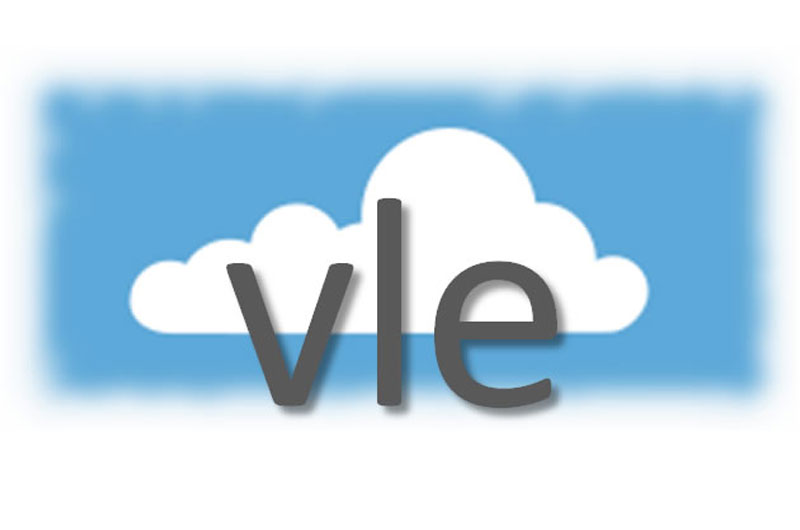Virtual Learning Environment (VLE) refers to real learning in a virtual environment. Sometimes also called Learning Management Systems (LMS) they provide a web based software solution to aid in the practice of distance or blended study. In general the term VLE tends to apply to computer programs that facilitate e-learning in a traditional education establishment, whereas the term LMS is normally deployed in reference to corporate training. In practice however the two acronyms are fairly interchangeable and can be used to indicate the same thing.

A good, robust, extensive VLE will allow a for its user to access a wide variety of different services and facilities, such as the syllabus for the course, through an intuitive and consistent platform. Users should be able to find various pieces of key administrative details such as: the location of seminars and lectures, a help guide plus details of modules and their appropriate credit information. A notice board providing recent course and establishment information could be made available. The VLE will also allow for teaching materials to me made available ranging from, according to the course and learning needs, a few relevant slides and visual aids through to the complete content of the course. A competent LMS can provide additional resources such as reading materials, links to important websites library content and suitable journals. Self and formal assessment procedures are also key components. The VLE is able to personalize the content so you are only provided with the relevant material, different access rights according to level mean students, tutors and administrators are using a portal in accordance with their respective roles. The ability to e-communicate via forums, e-mail and chat rooms is another feature of most LMSs. The learning platform should have the capability of supporting a wide variety of courses and training content, this would allow for an institution or business to have a consistent interface while catering for a broad spectrum of different learners.
Students benefit from using a VLE as they can be, from anywhere with an Internet connection, in contact with their course. Learning is freed from specific time of day and location constraints, obviously this makes distance learning a palatable prospect but it also has benefits for the blended learning experience. Students who, for whatever reason, miss face-to-face teaching can catch up quickly and simply. Learners are no longer left behind and can get quickly back up to speed due to their ability to be in instant touch with course materials. Learners also attain knowledge at different rates to one another. The use of a Virtual Learning Environment allows them to work and learn at their own pace, the tempo no longer set by the quickest, the slowest or the educator. Learning Management Systems are also personal portals so students only see content appropriate to them and thus are not overwhelmed by a deluge of irrelevant and unneeded information. Self assessment gives users the ability to check and monitor their own progress so they can make amendments to their learning and knowledge where necessary.
Educators benefit are able through these Learning Platforms to shape and guide their students learning. Putting their lecture and course notes online means they can better engage students in traditional classes as learners are no longer slaves to perfect note taking. They can supplement their teaching with media and audio content. Placing links on the portal ensures they can guide their students to important and pertinent parts of the web. Putting assessment details, essay and exam details on the portal frees more time to devote to actually teaching the subject. This also give learners a clear picture of what is required of them and when.
For businesses the potential cost and speed advantages of providing necessary staff training through a Learning Management System can be immense. Staff can be trained in a short space of time bringing them up to standard and allowing them to contribute to the company more efficiently. As learners are free to use the content from any location corporations don’t have to waste expenditure on travel other associated costs of moving staff to their teaching locations. E-learning brings the content to them whenever and wherever they are. Staff can also be trained in larger numbers as there are practically no limits to virtual class sizes. Constant assessment also gives businesses the ability to constantly and efficiently monitor the progress and proficiencies of their workforce.
For schools these e-learning platforms allow them to expand the classroom beyond its normal boundaries. Pupils can be engaged wherever they are. Their learning in relation to the Internet can be moulded in fitting directions. Schools can also interact with parents on a deeper and more extensive basis through their on line presence parents can easily be kept abreast of the latest school news. Virtual Learning Environments also allow schools to greatly broaden the scope and heighten the impact of the subjects they teach.
Universities can better time manage the use of their educators, especially if they have large administrative or research duties alongside their teaching requirements. VLEs also give them the opportunity to easily inform the large student bodies of any news, more easily manage problematic course and tutor group sign ups and many other administrative applications. Through the capabilities to provide distance learning through a VLE they can also educate a larger nu,ber of prospective students.






























